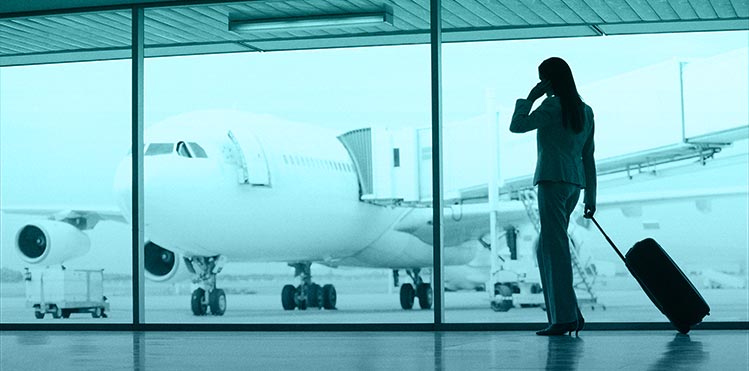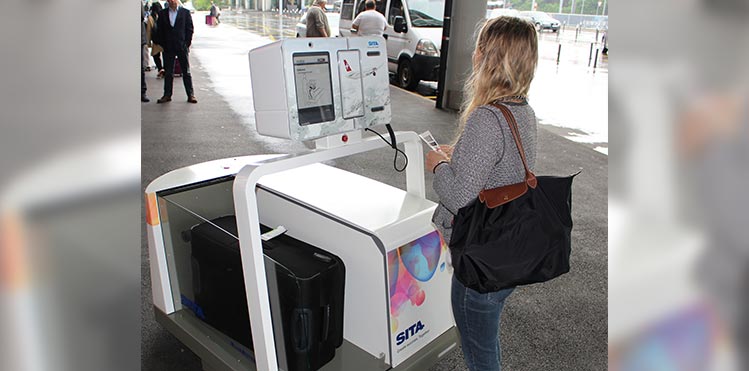Airports around the world expect to spend over $8.4bn on IT this year alone, highlighting the increased importance of technology in driving new efficiency, increased security and improved passenger experience at airports globally. More importantly, it demonstrates that digital transformation of airports is well underway. Catherine Mayer, Vice-President of SITA reports on the findings on the latest trends.

The recently released Air Transport Airport IT Trends Survey 2017, co-sponsored by ACI and SITA, reveals that cybersecurity and passenger self-service technologies are the priority investment areas for major programs and resources over the next three years. The report also shows how airports are increasingly looking at emerging technologies such as single biometric tokens, sensors, and artificial intelligence (AI) to create a seamless, personalised journey for passengers.
The global proliferation of cyber risks has, unsurprisingly, made cybersecurity the number one priority for airport IT major programs or R&D investments. In fact, nearly all airports (96%) plan to invest in cybersecurity initiatives over the next three years. As airports go through their own digital transformation, the critical nature and dependency on data and systems means that any breach could be detrimental to an airport – and potentially across the highly interwoven air transport industry. Therefore, it is imperative to build solid defences.
Empowerment by self-service continues
The second key area of investment was in passenger self-service technologies. The survey confirmed that while 85% of airports globally and 94% in Europe already offer self-service check-in kiosks, there is a focus to reach similar coverage for self-bag tagging, drop off (both assisted and unassisted) and collection by 2020. As the air transport industry continues to roll out the technology, it is also evolving to become more user-friendly, requiring minimal input from passengers. The latest self-bag drop kiosks, for example, automatically detect and scan bag tags, and dispatch luggage into the bag sortation system. The combination of ubiquitous availability and increasing usability should help airports in Europe reach 90% adoption over the next few years.
Almost 80% of airports globally said that leveraging digital technologies, beacons and other sensor technology would allow them within the next three years to provide flight, gate, walk time or other important notifications to passengers.
There are also efforts to ensure smooth, unassisted self-service boarding solutions, although only 64% of the airports globally will be ready by 2020.
The implementation of single token, biometric processes will surely help to expedite the uptake in this area over the coming years. Identity checks, despite being a vital element of the passenger journey, are a traditional pain point for travellers. In fact, passport control has one of the lowest satisfaction ratings of all the stages of the passenger’s journey, according to the SITA 2017 Passenger IT Trends Survey released earlier this year. However, the same survey shows that automated identity checks which use biometrics to boost passenger satisfaction at passport control and boarding.
Self-service technology gives passengers more control over ID checks throughout their journey, helping them avoid slower queues and the unpredictability of dealing with border agents. It is encouraging to know that 76% of Europe’s responding airports (61% globally) will offer automated self-service border gates by 2020.
The next step in this progression is single token travel – one token that passengers can use to navigate all touch points in their journey. With 64% of European airports (and 58% global) planning to implement this technology within five years, this trend is an important one to watch.
Ideally the solution should be designed to seamlessly integrate with existing airport and airline infrastructure. A passenger’s biometric details are captured – in most cases through a facial scan – at the first touch point in his/her journey. The biometric record is checked against the passenger’s travel documents and a secure single token is created. From this point they can use their biometric (face) as identification at each additional step of the journey – from check-in to the aircraft without having to show their passport or boarding pass again.
The Internet of Things
Another exciting trend airports are focused on is the ability to integrate, be interactive and intelligent. As 80% of the airports around the world invest in their own “IoT” (Internet of Things) and sharing of data over the next three years, they are also focusing on their interactive and data analytics abilities as well.
A total of 93% of the airports in Europe who responded stated that they would deploy interactive navigation, wayfinding, context and location aware applications within the next five years. Almost 80% of airports globally said that leveraging digital technologies, beacons and other sensor technology would allow them within the next three years to provide flight, gate, walk time or other important notifications to passengers. This direct interaction with customers including personalised information, at the right time, while at the specific location, via the customer’s digital channel of choice, is what travellers expect. It should also be noted that these applications are not limited to passengers but are used for staff and assets as well.
Leveraging the immense amount of data from the various systems, enabling stakeholders to learn from the past and help predict the future to make informed decisions, is a key part of any airport’s digital transformation. While two thirds of airports responding to the survey stated that they have a digital transformation strategy for the passenger journey at the airport in place today, very few have identified plans to help them in the areas of operations, overall airport enterprise processes as well as internal processes. These results confirm that there will be increased focus to expand the benefits of integrated, interactive and intelligent technologies throughout the airport eco-system.
Prepare for AI

A key area of investment is in passenger self-service technologies. The survey confirmed that while 85% of airports globally and 94% in Europe already offer self-service check-in kiosks, there is a focus to reach similar coverage for self-bag tagging, drop off (both assisted and unassisted) and collection by 2020.
Another technology trend highlighted is the introduction of artificial intelligence (AI) at airports. Airports are increasingly turning to AI to support their customer service, with 45% of airports set to invest in research and development over the next five years. The technology is being introduced through business intelligence tools as mentioned previously as well as robotics, drones, and other inanimate assistants.
By 2020 42% of airports plan to adopt AI-driven chatbot services. These computer programs, that mimic human conversation, can help with customer queries, find best transportation solutions to/from the airport, and purchase services.
At the airport, AI can also be used to manage intelligent machines for a wide range of functions from information or wayfinding, cleaning, crowd control, immigration and porter services, to airport operations and security. They can be equipped with face and recognition, understand and speak multiple languages, print or show information on screens, scan passports and boarding pass, and show people the way. And AI can also be used to integrate airport, airline, government and security systems.
These trends confirm that digital and other emerging technologies are driving efficiencies across the entire passenger journey, providing options and personalised services while enabling airport, airline and ground handling staff to focus their attention on other customer, business and operational activities.
They also highlight how IT continues to transform airports in all areas, helping them to create a safe and secure environment, unique sense of place, and personalised experiences for everyone – staff, guests and virtual visitors alike.







